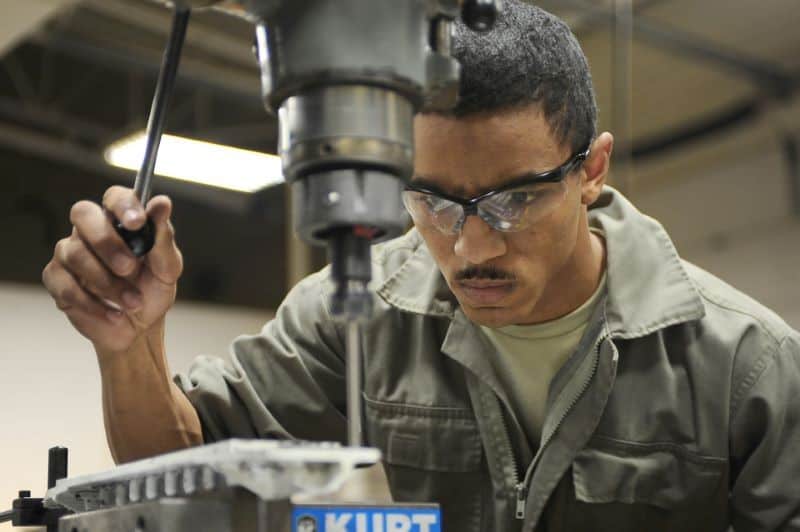Are you looking for a career and are wondering what it would be like to become a machinist? Or maybe you know someone that says he’s a machinist and have no clue what that means.
What does a machinist do? A machinist works with precision cutting machines to produce extremely accurate mechanical components. These machines may be manual or computer controlled. Parts may be produced in a variety of materials, commonly metal or (less commonly) plastic.
That’s the short answer. If that doesn’t do it for you, keep reading.
Table of Contents
What a Machinist Does: The More Complete Answer
There are actually a lot of skills that need to be mastered (more or less) by a machinist. It’s often a very mentally engaging position.
Of course, this will all depend on the company that a machinist works at. Some companies produce very basic or repetitive types of parts, so the work might become pretty dull after a while.
At some companies, though, you’ll almost never see the same job twice.
Either way, let’s go over the general process of machining. This will give you a good idea of what machining is really like.
The Machining Process
Here’s a basic outline that explains the machining process. I’ll explain what the step is and what skills are needed to pull it off successfully.
Planning
You pretty rarely can just toss a part in a machine and cut it without putting some thought into it.
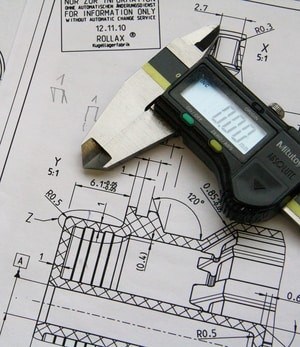
First off, the machinist needs to analyze the requirements. This might come in the form of an engineering drawing, a 3D computer model, a napkin sketch, or Farmer Joe trying to explain it from behind all his missing teeth.
At that point, the machinist needs to work out some basic steps. For example:
- What material is needed? Shape, grade? Does it need to be ordered, or is there some on the shelf?
- What cutting tools are needed to perform the cutting operations?
- What machine is suited for this work? Is it big enough to handle the part?
- How is the workpiece going to be clamped and located within the machine?
- What are critical features on the part, and how do I plan to produce them?
- Are there any other processes required to produce the part? Heat treating? How does this affect the order of operations?
- What needs to be calculated before the first cut?
- Is there anything that’s not on the drawing but is needed in order for the part to function?
These are a few of the things that a machinist needs to review before starting the job. For some parts, you can glance and cut. Some parts take days to plan out.
Skills required:
- Ability to use brain
- Blueprint reading, possibly familiarity with Geometric Dimensioning and Tolerancing (GD&T)
- Familiarity with material cutting properties
- Strong understanding of machine tools
- (optional) ability with computer modelling and drafting software
Programming
If the part is to be cut on a computer controlled machine (CNC), it will need to be programmed. Simple operations might take two minutes, complex components might need 2 weeks or more.
The CNC machinist will need to specify exactly where workholding like clamps and vises will be located, the stock size of the material to be cut, and orientation(s) of the part to accommodate machine ability.
Then the machinist will program all the toolpaths and functions required to carve out the part from the stock material.
Setup
Whether the operations are done by manual or computer controlled machines, the machinist will need to load up the part in the machine, clamp it securely, and accurately orient or measure the orientation of the part.
Sometimes this is super straightforward; toss a rectangular piece of stock in a vise and call it a day. Other times, this is extremely complicated. For example, think about a casting that doesn’t have a single flat surface.
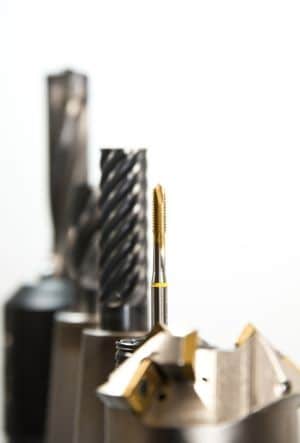
There are loads of different devices out there that are designed for different kinds of workholding. The machinist needs to either match up the part and operation with appropriate clamping, or design and produce something that will be effective.
Since the cutting forces with metal can be extremely high, this is a step that really needs to be done well.
The machinist will also need to pick out appropriate cutting tools. For some jobs, this might mean ordering something that isn’t in stock. There are thousands of tools to choose from, and the machinist needs to be very familiar with how to pick one that fits the requirements.
This means understanding different shapes, cutting angles, coatings, edge preparations and substrates. There are a lot of very specialized tools that are manufactured to produce industry standards. The machinist will choose a tool that’s not only capable of creating the required features, but also that can produce them efficiently.
Operation
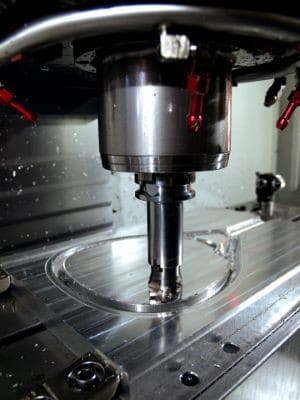
For CNC machinists, operation of the equipment consists of pushing the start button, then paying extremely close attention to what’s going on inside the machine.
The machinist will often slow the machine down, pause it to double-check, and fine-tune the cutting parameters to get the best results. This can be a little stressful on complicated operations. CNC machines are very high powered and easy to crash.
For manual machinists, this involves manually setting the machines and cranking the handles and dials around to cut the parts. Machines with power feed are becoming more common, which means that the manual work isn’t quite so… manual.
Both types of machining take a lot of skill. The machinist needs to make some very precise calculations and be able to listen to the sounds of the machines as they work. They need to pay attention to tools as they wear out so that they can be changed before they snap and damage something.
Inspection
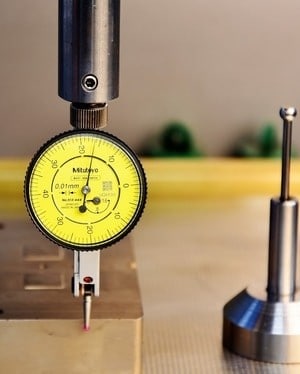
Measurement is a major part of machining. We work to really tight tolerances, and the only way we know that something’s good is by proving it. Machinists often work to tolerances of 0.001″ and sometimes even down to 0.0002″.
If those numbers mean nothing to you, an average piece of printer paper is about 0.002″ thick. Now slice that paper thickness 10x over and you’ll have that 0.0002″ precision that can be expected.
Besides that, we’re often making components that need to precisely fit to other components that we don’t have access to. That means that we can’t just fit it up and see how good it is. It has to be right, and we prove it by measuring it accurately.
Measurements aren’t limited to simple dimensions. Machinists also often need to check things like material hardness and surface finish.
Machinists use a whole slew of measuring tools, all of which require skill and familiarity to use correctly. Here are some examples of what you might run into:

- Calipers
- Micrometers
- Gage blocks
- Gage pins
- Height gages
- Bore gages
- Profilometers
- Hardness checkers
- Optical comparators
- Thread micrometers
- Measuring wires
- Go/no-go gages
- Dial indicators
- Coaxial indicators
- CMMs
- Telescoping gages
- etc
Miscellaneous
Beyond cutting material, there are a lot of other useful skills that a machinist might be expected to know.
For example, in many repair shops, a machinist might need to be familiar and comfortable with welding. He might use a welding machine to add material to a worn-out part to that he can cut it back down into the required form.
Machinists might also need to be very familiar with processes like heat treating. This can be a very common process in some shops, and can take a reasonable amount of skill to get right.
Other machinists might need to be familiar with assembly and disassembly of mechanical systems, like automotive, heavy equipment, or hydraulics.
In reality, the work and skill that’s expected from a machinist is varied and demanding. It’s definitely not a boring job!
What Kinds of Machines do Machinists Work With?
Lots.
Here are a few common ones, along with what they do.
Manual
Manual machines are basically machines that aren’t controlled by a computer. They can have power feeds for semi-automatic movement, or they could have a bunch of cranks and whatnot to move the machine around.
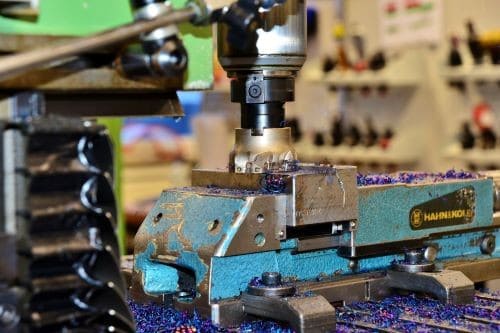
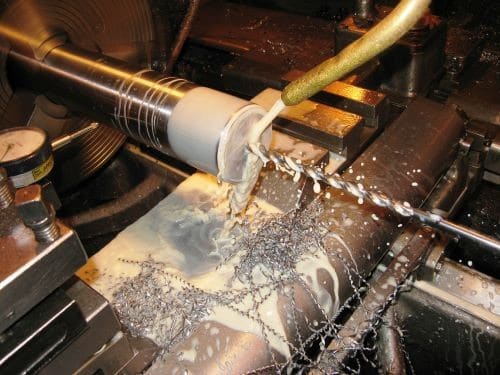
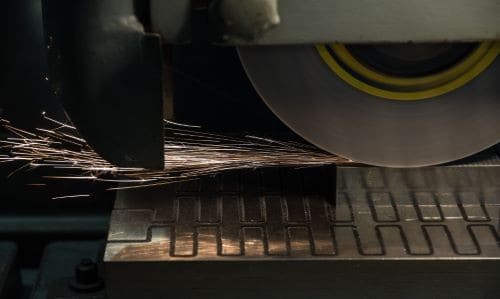
CNC
CNC machines are often similar to manual machines, except that they’re controlled by computers. This allows them to make parts that are much more complicated, and they can do it significantly faster once set up and programmed.
Computer control also allows for much more complicated machines. Some have multiple cutters, others are able to simultaneously tilt and move in order to cut all sorts of fancy shapes.
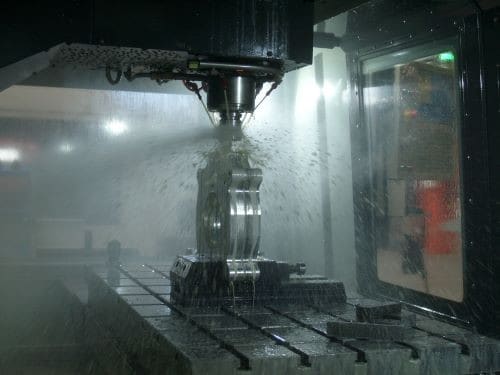
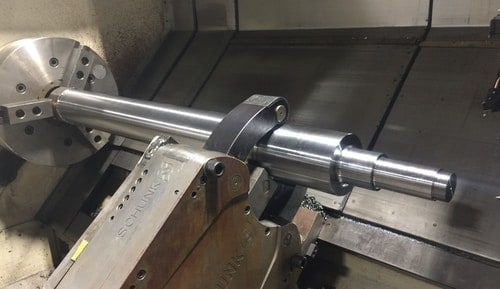

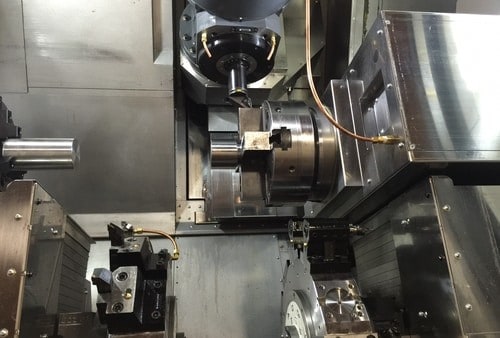
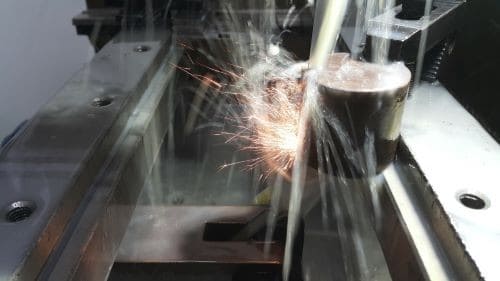
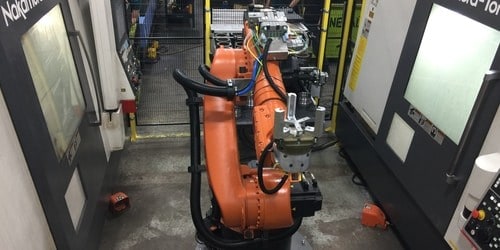
Is Machining a Good Career?
Of course it is. Why else would I be doing it?
The real answer is that it depends on where you work. Some shops are complete dungeons, others are pristine. The work itself, though, is really cool.
Machining can be as advanced or as basic as you want it to be. This is cool because you can always find a job that fits your ability and skill set.
Is Machining a Dying Trade?
Heck no.
It’s true that computer controlled machines are gradually replacing manual machines, but there will always be a place and purpose for manual equipment. For example, they’re great for making small batches of parts and for making repairs.
The CNC machining industry, however, is huge and growing. North America is known for producing some really high-quality, complex parts. There are always new innovations rolling out that will keep machinists in high demand for decades to come.
What Kind of Stuff Does a Machinist Make?
Pretty much any kind of mechanical component that you can think of. There are a few examples based on the different industries you might get involved with.
Aerospace
This has been a steadily growing industry for decades. There’s a lot of work to be done making things that can fly.
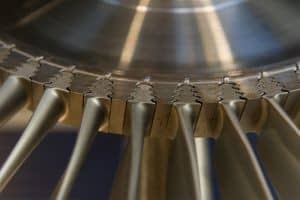
Generally this is referring to making airplane parts, although occasionally you might get the opportunity to make something that goes up into space. This is an industry that prefers to use CNC machines to produce small batches of tricky parts. Here are some of the things you can make:
- Wing spars
- Brackets
- Hinges
- Turbine parts
- etc
Medical
This is another demanding industry. Obviously the quality control needs to be very high, especially for parts that will end up in the human body.
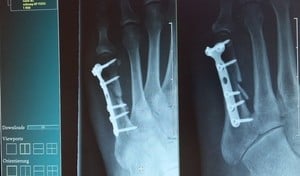
Here are some examples of what you might make:
- Hip replacements
- Knee replacements
- Spine cages
- Orthopedic screws
- Surgical tools
- Dental implants
- Veterinary devices
Automotive
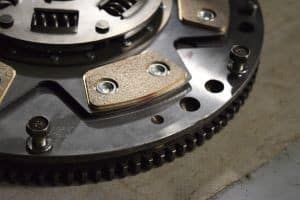
The challenge with mass-produced automotive parts is getting costs down. You’ll rarely see operations that are as efficient as automotive processes.
This is because parts are created in such insane quantities. Since everyone is bidding on this high volume work, there’s a lot of competition to be the best. Here are some possible types of parts:
- Engine blocks
- Pistons
- Valves
- Camshafts
- Flywheels
- Transmission gears
- etc, etc, etc. Did you know that the average car is made up of about 30,000 parts?
Military

Military contracts can be huge, and there’s a lot of variety in what’s produced. Here are the examples:
- Scopes, gun parts
- Tank parts (like automotive parts, but bigger)
- Exoskeletons
- Jet parts
- etc
Agriculture
This is a really steady industry, and there’s a lot of work to be done. Agricultural equipment takes a lot of abuse, and the parts need to be made to stand up.
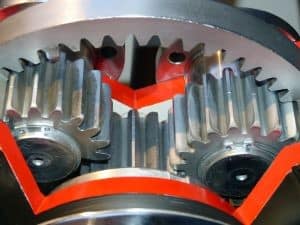
Here are some of the kinds of parts to expect:
- Shafts, so many shafts!
- Gears of all kinds, but lots of planetary gears.
- Pump housings
- Gear housings
- etc
Energy
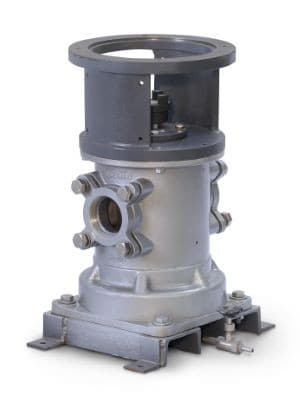
Right now this is mostly oil and gas, but as other forms of energy become popular, we’ll need to make ’em.
Some of this stuff is huge, some of it’s tiny. Here are some examples:
- Pipe flanges
- Pressure vessels
- Pipe repair tools (some of them are crazy complicated)
- Flow measurement tools
- Drills
- Pump housings and components
- etc
Tooling/Industrial
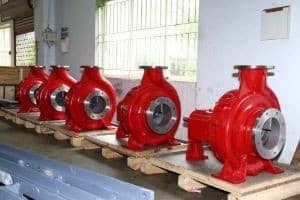
This is a pretty big catch-all, but there are a lot of big industrial things to make.
- Driveshafts
- Really, really big gears
- Giant stamping dies to form cars from sheet metal
- Blowers
- Pumps
- Big things for big machines
What Kinds of Machinists Are There?
Generally speaking, there are two categories of machinists: manual and CNC.
However, many machinists do both. It’s actually really useful to cross-train and learn both aspects of the trade.
There are also some related fields.
For example, tool and die makers are people that specialize in making things like cutting and forming dies for sheet metal work, as well as moldmaking for things like plastic injecting molding or metal casting.
Millwrights are focused on industrial equipment repair. They’re generally not as specialized with machining, however they make use of a lot of other skills. Some examples are electrical wiring and welding.
How Much Does a Machinist Make?
There’s the real question.
I’ll break it to you easy: We ain’t rich.
If you’re looking to make a lot of money, there are easier ways. That said, the pay’s really not all that bad. A lot of it will depend on career choices you make.
According to most sources, the average US wage for a manual machinist is about $20/hour. Keep in mind that this is the average, so half is higher, half is lower.
It’s pretty common to start off low until you learn how to make things without being babysat. This usually ranges from $12-15 for the first bit, and then you’ll steadily go up from there. Of course, this all depends on where you live and who you’re working for.
For CNC machining, you can expect to make a bit more. $25/hour is a reasonable expectation once you’ve got some years under your belt. If you get into the complicated stuff, like multiaxis milling and lathe lovechilds, you’ll do even better.
At the end of the day, most guys do this because they enjoy it. There are usually lots of opportunities for overtime, which can make you a reasonable amount of money quickly.
Really, though, if you’re just in it for the money, become an electrician or a plumber. In this twisted world, it’s easier to learn and it pays better.
Interested in knowing how to become a CNC machinist? Here’s my complete guide. Follow in my footsteps, young padawan, and click this link.

